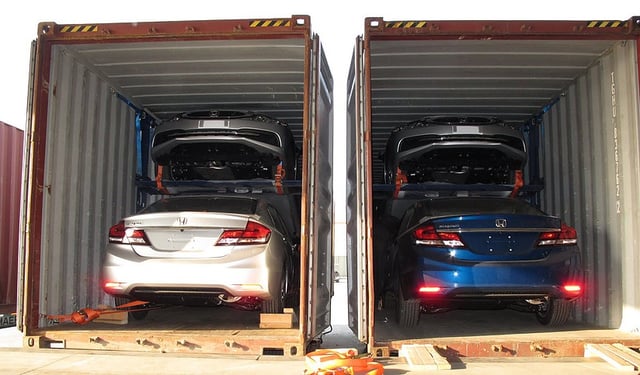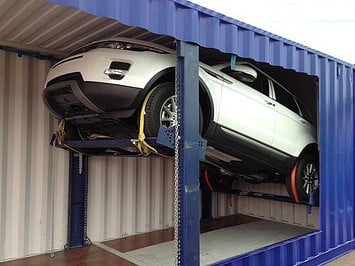
Are you an entrepreneur considering overseas car trading as a venture? Cars can be big business. The UK in particular has a rich transport heritage, with a strong market in the USA, Europe, India, and Asia. Whether the aim is to ship classic vehicles, top-end models, or everyday transport, these trade routes are bursting with opportunities.
However, where to begin, and what are the risks? In this article we look at the difference between RORO ferries, and explain how containerised car transport works.
Vehicle Transport: What Do I Need To Know?
Transporting cars abroad is relatively effortless. There are reliable routes and systems in place, as well as shipping brokers who can find good deals. The main choice for an enterprising dealer is to decide between roll-on-roll-off (RORO) ferries, or containers.
Traditionally, RORO ferries have been the go-to option. This is because, until recently, containers were considered to be a problematic shape for cost-effective shipping of vehicles. However, RORO ferries have long had problems. These include a high risk of damage to vehicles if they are not secured properly, or if there are particularly rough seas. Plenty of videos haunt the internet, including this fleet of brand new BMWs, which was entirely destroyed.
That kind of damage is what motivated Trans-Rak International to develop strong, secure, reliable racking systems that allow up to four cars to be safely transported inside a single container.
Our safety record is 100%. Here’s how it works.
 Positioning The Car
Positioning The Car
R-RAK racking systems involve reinforced high-grade steel frames that are slotted into the container. The vehicle is driven onto the wheel frames – or loaded via forklift, in the case of DL-RAKs – and then the rack is lifted and secured.
Securing The Car
A combination of wheel chocks and lashings to various parts of the vehicle depending on requirements can be used to hold the vehicle firmly in place during transit.
The combination of straps and high-strength steel chocking offer formidable security, even in the roughest seas. This clip shows an R-RAK in action during an impact test. The chocks and lashings work with the naturally strong shape of the container to absorb forces, keeping cars from harm.
Adding More Cars
With the first car raised and tilted into position, the second car can be neatly positioned under the first. In a standard 40ft container, this process can be used to securely fit four vehicles. Because R-RAKs are adjustable, the positioning can simply be altered to accommodate a combination of different sized and shaped vehicles. The same racking is used for any vehicle size.
Once all cars are inside the container, it is locked, and remains safely sealed until it is delivered. You can see how this works in this short video.
Re-using The Racks
At the end of the journey, the racks can be removed, folded, and re-used. The high quality of the steel means that they have an average working lifespan of 7-10 years.
Anything Else?
Trans-Rak International continues to develop new product lines, so that no vehicle is too complex to transport safely and cost-effectively by container. Whether you need to transport driverless vehicles or stripped down vehicles – both of which are a particular challenge for RORO ferries - there is an ideal racking solution. For more information, please get in touch, and we’ll be happy to explain more!















